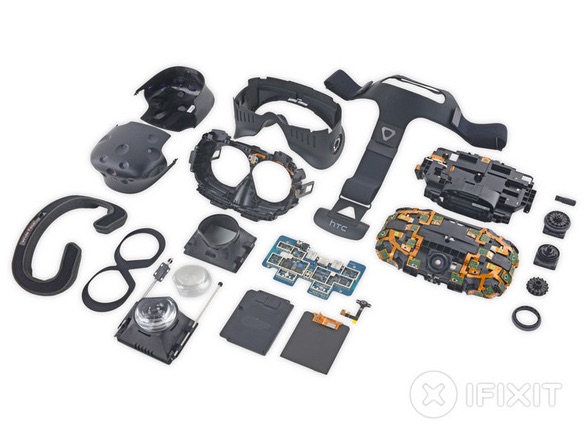We’ve already seen what the Oculus Rift is hiding under its shell, now it’s time to take a closer took at the HTC Vive and all the crazy tech powering the competing virtual reality headset.
The repair experts at iFixit took apart HTC’s VR gadget and found it jam packed with sensors and other impressive technology. The report also notes that HTC and Valve actually did a pretty great job of making the device easy to repair. It scores an impressive 8 out of 10, even beating out Facebook’s Oculus Rift by a single point.
The HTC Vive packs 32 sensors all across the front, which makes it possible track your specific motions thanks to a pair of Lighthouse base stations emitting IR light. The Vive also ships with two controllers, which hold an additional 24 sensors each. That may sound excessive, but it’s what allows you to physically explore virtual reality while wearing the headset.
iFixit found a proximity sensor inside the Vive that can tell when it’s on your face to switch on the display. Speaking of which, HTC opted for a pair of AMOLED panels at 447 pixels per inch, falling just short of the Oculus Rift (456 ppi). Finally, the lenses feature a concentric ring design, along with a mysterious QR code etched into the side that couldn’t be scanned.
iFixit notes that the HTC Vive consists of a very large number of delicate components, so you probably shouldn’t try taking it apart just to see what’s inside. Still, it’s good to know that, if something does stop working, this VR headset is relatively easy to repair.














